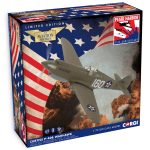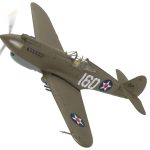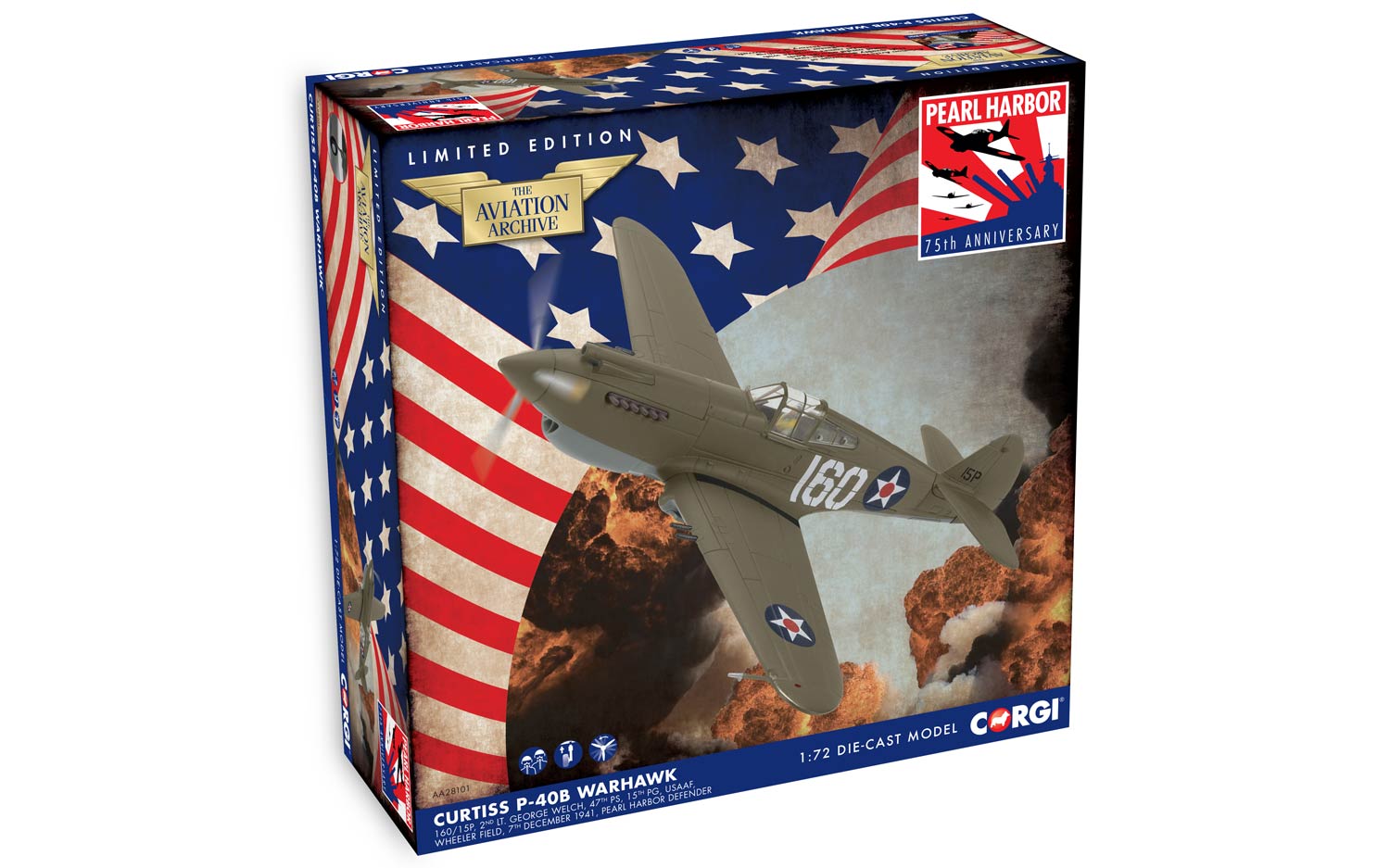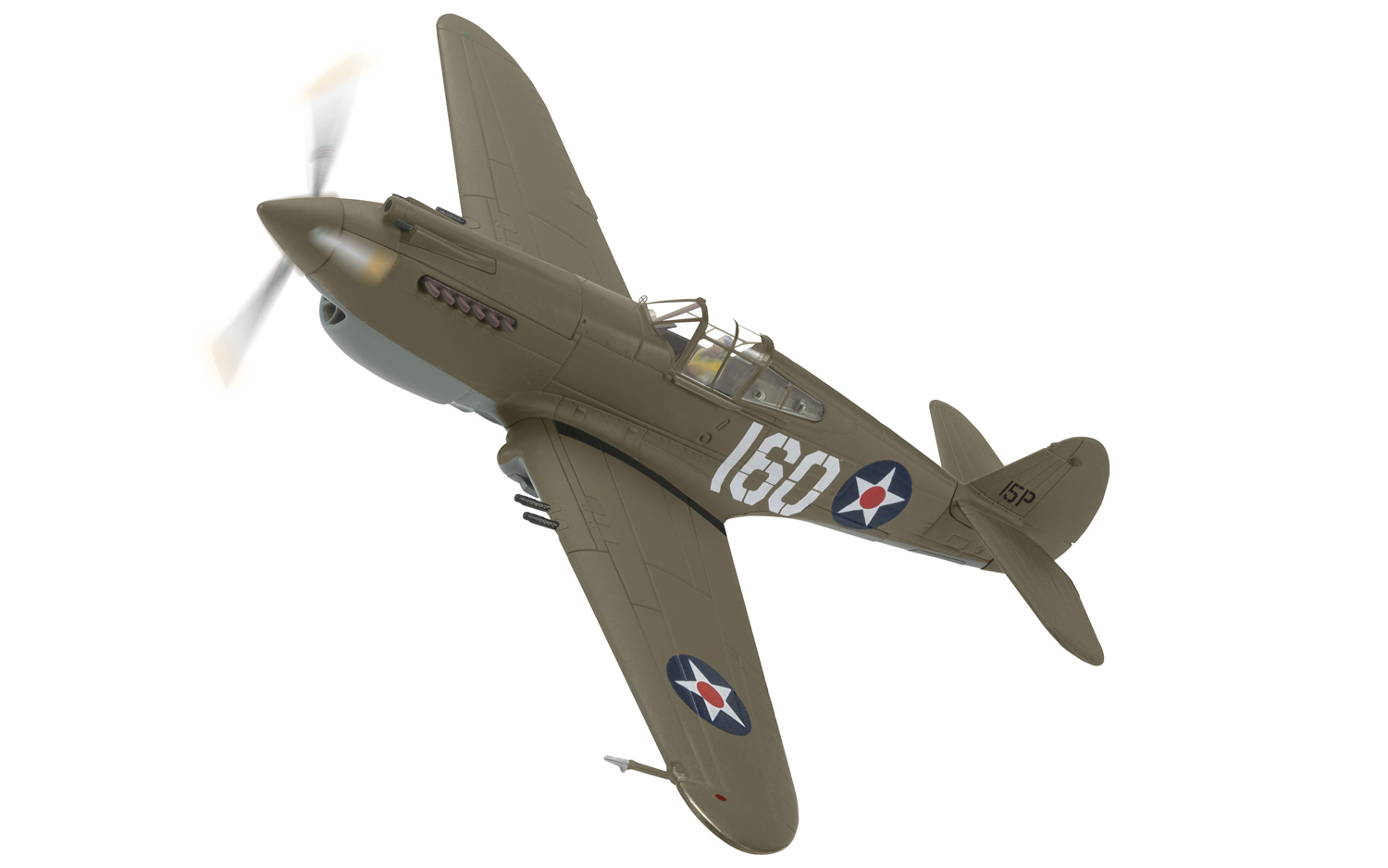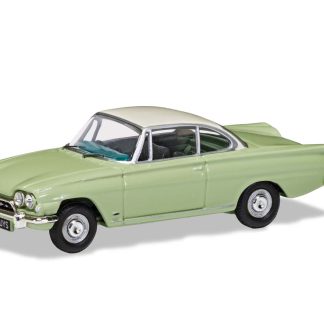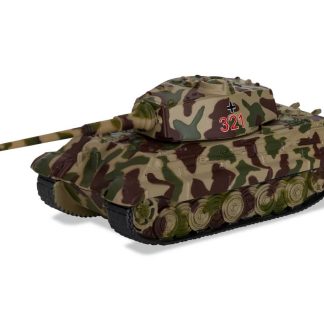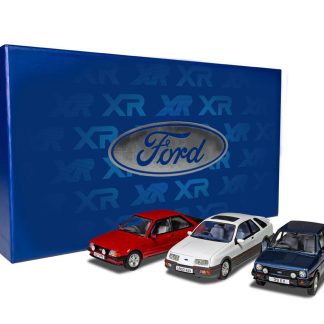Description
Corgi is proud to present a brand new Aviation Archive tooling the Curtiss P-40B Warhawk/Tomahawk.
The Curtiss P-40 Warhawk is not generally regarded as one of the most accomplished fighters of the Second World War, but it is difficult to think of a more important aircraft for both Britain and America in the months following the end of the Battle of Britain. At a time when both Britain and France were desperate for as many modern monoplane fighters they could lay their hands on, the Curtiss P-40 was arguably the best aircraft the Americans had available and they allowed the French (this order was ultimately transferred to Britain) and British to order the fighter in large numbers. The P-40 was quick and easy to manufacture and allowed nations already in combat with Axis forces to obtain large numbers of new, modern fighters, enabling them to continue fighting on many fronts and buying them much needed time until the incredible industrial might of America could be brought to bear.
For the British and Commonwealth Desert Air Forces, the Curtiss P-40, which they christened 'Tomahawk , proved to be a critically important aircraft and they were the first to take the P-40 into combat during June 1941. Being rugged and reliable, the RAF P-40s were a dogged adversary for Luftwaffe and Regia Aeronautica units even though many Tomahawks were lost in combat, they took a heavy toll of Axis aircraft.
Following an extremely late night at the Squadron Christmas party the day previously, USAAF pilots George Welch and Kenneth Taylor woke to the sound of explosions and low flying aircraft. The date was 7th December 1941 and the United States naval base at Pearl Harbor was under attack. Still wearing their mess dress from the previous night, the men rang ahead to Wheeler Field, where their Squadron had been deployed for gunnery practice and instructed ground crews to prepare two P40 fighters for flight.
Driving their Buick at high speed and coming under fire from Japanese aircraft, the men arrived at Wheeler and immediately made for their aircraft, taking off beneath waves of attacking enemy aircraft. The two pilots fought valiantly against overwhelming odds, even landing to re-fuel and re-arm, only to take off and fight again. During a frantic few minutes, Welch destroyed four enemy aircraft, with Taylor accounting for at least a further two. For their heroic actions during the Pearl Harbor attack, George Welch and Kenneth Taylor were both awarded the Distinguished Service Cross.

